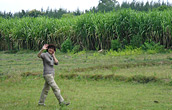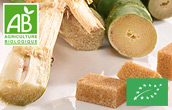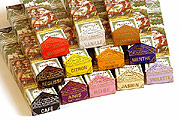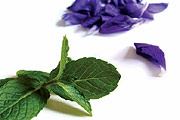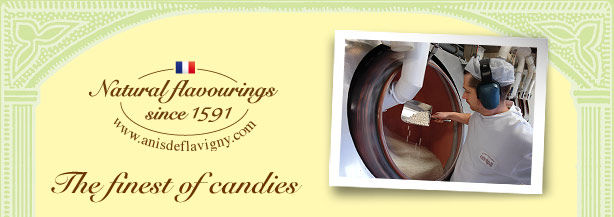
An aniseed...
Our candies are made with Anise. This plant, Pimpinella anisum, is not to be confused with fennel (a vegetable) or with star anise (Chinese anise, the fruit of an exotic tree).





The Anise we use is an umbelliferous plant and its small oval fruits, striated longitudinally, have a warm, spicy flavor and a remarkably aromatic scent. We select our aniseeds in August, after they are harvested in Spain, Tunisia, Turkey, Syria, etc.
... sugar...
Then we place the seeds in large pans and pour sugar syrup (water and sugar) over them. The seeds roll over one another and gradually become covered in fine successive layers of syrup, kind of like snowballs tumbling down a snowy hill.This rotation in pans also makes the candies become smooth, like stones that are rolled on the beach by the incessant waves of the sea. The process involves delicate, patient work; the candy-maker needs 15 days to transform the small seed that weighs barely two milligrams into a one-gram candy.






We have used white sugar since sugar beet was discovered by Olivier de Serres in 1575. Before that, we used cane sugar (slightly grey-reddish-brown).
Darius, back from an expedition in the Indies (510 B.C.) called sugar cane “the reed that produces honey without the help of bees!”.
We still make Anis ® candies with unrefined cane sugar, in an Ecocert-certified organic collection.
... and natural flavoring.
Les Anis de Flavigny ® come in ten different natural flavors: anise, of course, but also blackcurrant, lemon, orange blossom, ginger, tangerine, mint, liquorice, rose and violet.The taste for anise-flavored beverages was introduced to the shores of the Mediterranean in ancient times, during the Turkish and Hellenic dominations. The cultivation of anise then gradually expanded to the entire Mediterranean area.
After the original anise-flavored Anis de Flavigny ® came rose-flavored Anis de Flavigny ®, followed by other flavors. In 1800, Les Anis de Flavigny ® were already available in a wide variety of flavors.
Our natural flavors are extracted from plants by steam or alcohol distillation. For mint, for example, the leaves are placed in a still, and then the water is heated. The steam that is formed crosses through the leaves and is impregnated with mint essential oil. The essential oil is recovered, after passing through the gooseneck, when the conduit crosses through a bath of cold water.
To make one liter of natural neroli essence (essence of orange blossom), a ton of orange blossoms are needed (the tree is called a bitter orange tree). To make one liter of natural rose essence, two tons of rose petals are needed.



